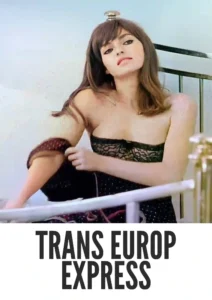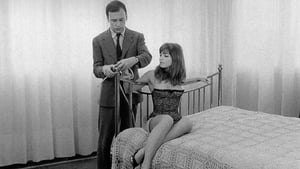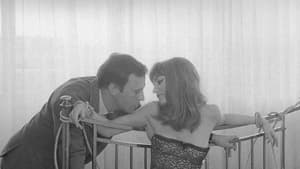Video Sources 0 Views

Synopsis

Embark on a surreal and provocative journey with Trans-Europ-Express, a French experimental thriller from 1966, now stunningly colorized to challenge your perceptions and ignite your senses. Directed by Alain Robbe-Grillet and starring Jean-Louis Trintignant and Marie-France Pisier, this film blurs the lines between reality and fiction, weaving a complex narrative within the confines of a train traveling from Paris to Antwerp. Perfect for cinephiles seeking intellectual stimulation and those with a taste for the unconventional, this HD download offers a visually arresting and thought-provoking cinematic experience.
Trans-Europ-Express follows a film director named Jean, his producer, Marc, and his assistant, Lucette, as they ride the Trans-Europ-Express from Paris to Antwerp. During their journey, they begin to brainstorm ideas for a new film, centered around a man named Elias, who becomes involved in drug smuggling and encounters a mysterious woman named Eva.
As they develop the script, the lines between reality and fiction become increasingly blurred. The director and his team begin to manipulate Elias’s actions, turning him into a puppet in their cinematic game. The film explores themes of voyeurism, control, and the nature of reality, challenging the viewer to question what is real and what is fabricated.
The narrative unfolds through a series of fragmented scenes, dreamlike sequences, and shifting perspectives, creating a disorienting and unsettling viewing experience. Trans-Europ-Express is a bold and experimental work that defies traditional storytelling conventions, offering a unique and unforgettable cinematic experience.
The film features a talented cast who bring this enigmatic story to life:
-
Jean-Louis Trintignant as Elias
-
Marie-France Pisier as Eva
-
Christian Barbier as Lorentz
-
Charles Millot as Franck
-
Daniel Emilfork as Le policier
Trans-Europ-Express is best described as an experimental erotic thriller. It blends elements of suspense, mystery, and psychological drama with a distinctly avant-garde aesthetic.
Released in 1966, Trans-Europ-Express emerged during the era of the French New Wave, a movement that revolutionized filmmaking with its innovative techniques and unconventional storytelling. The film reflects the experimental spirit of the time, pushing the boundaries of cinematic form and challenging traditional narrative structures. Trans-Europ-Express stands as a testament to the creativity and artistic vision of the French New Wave, solidifying its place as a landmark of experimental cinema.
This colorized version of Trans-Europ-Express has been meticulously restored using advanced digital techniques, enhancing the visual impact while preserving the film’s original atmosphere of mystery and intrigue. The colorization process involved a careful analysis of the grayscale tones in the original black and white footage, with attention paid to assigning appropriate colors to each scene. This painstaking process brings new depth and texture to the characters and settings, making the story even more captivating for modern audiences. While the artistic merit of colorizing classic films is often debated, it can introduce these films to a broader audience, ensuring their continued relevance for years to come.
-
: Alain Robbe-Grillet
-
: Alain Robbe-Grillet
-
: Willy Kurant
-
: Bob Wade
-
: Michel Fano
-
: 105 minutes
-
: MP4
-
: HD (1080p)
-
: Compatible with most devices, including smartphones, tablets, computers, and smart TVs.
Trans-Europ-Express (1966) has been hailed as a groundbreaking and influential work of experimental cinema. It is praised for its innovative narrative structure, its striking visuals, and its thought-provoking themes. While it may not be for everyone, Trans-Europ-Express remains a must-see for cinephiles interested in exploring the boundaries of film.
-
: What is Trans-Europ-Express about?
-
A: Trans-Europ-Express is an experimental thriller about a film director and his team who create a film within a film during a train journey from Paris to Antwerp.
-
-
: Is Trans-Europ-Express (1966) a well-known film?
-
A: While not a mainstream film, Trans-Europ-Express is highly regarded within the world of experimental cinema.
-
-
: Is this version of Trans-Europ-Express colorized?
-
A: Yes, this version has been professionally colorized to enhance the viewing experience.
-
-
: What makes Trans-Europ-Express interesting for film enthusiasts?
-
A: Trans-Europ-Express offers a unique and challenging viewing experience, pushing the boundaries of cinematic form and challenging traditional storytelling conventions.
-
-
: What is the download format?
-
A: The download format is MP4, which is compatible with most devices.
-
-
: What resolution is the download?
-
A: The resolution is HD (1080p), providing a high-quality viewing experience.
-
Watch Trans-Europ-Express Today!











